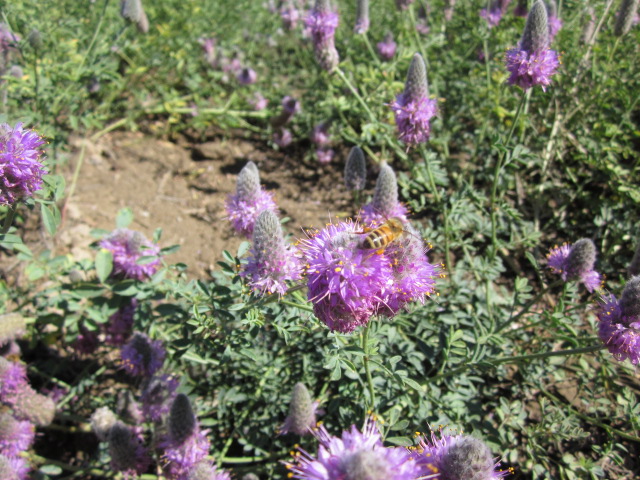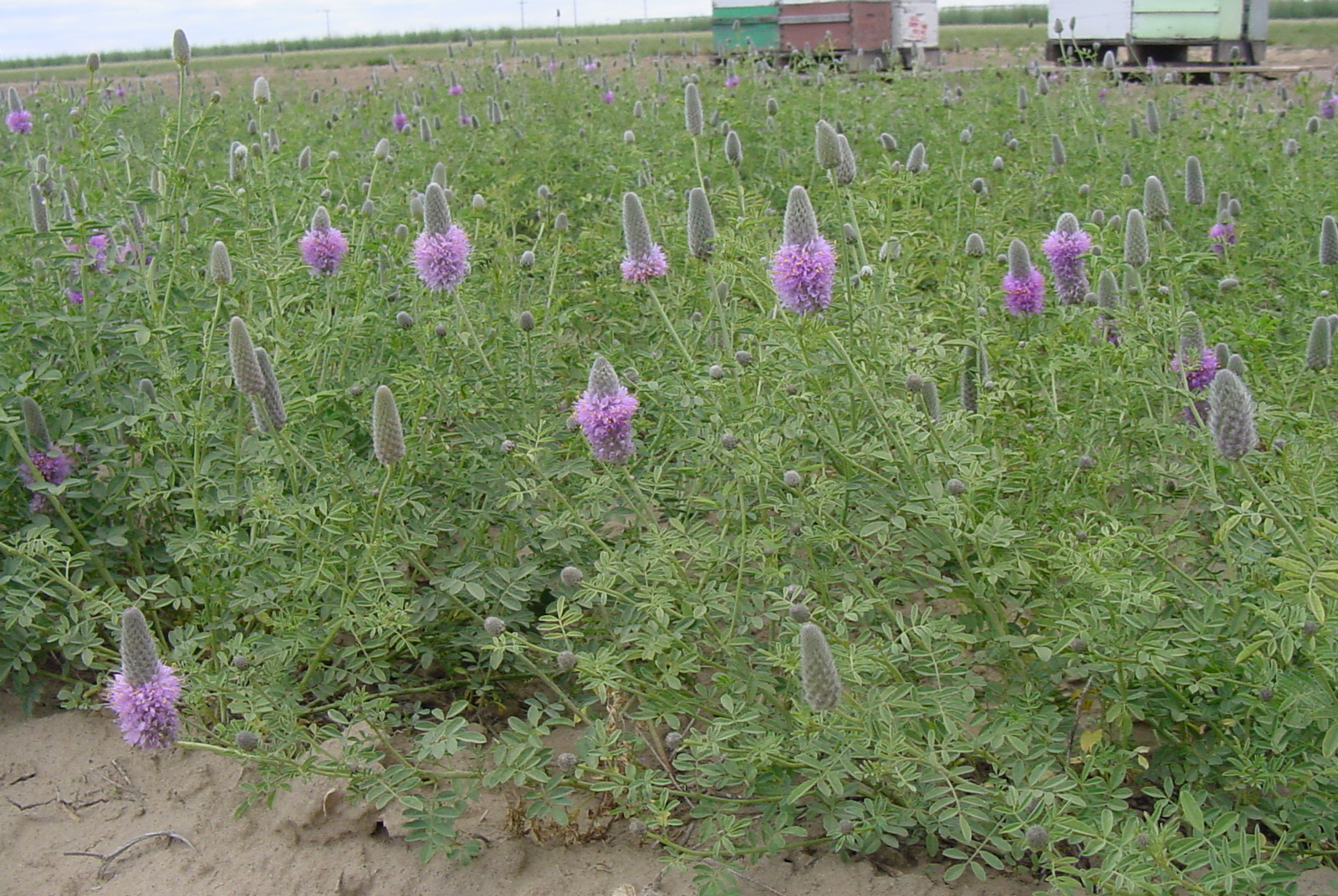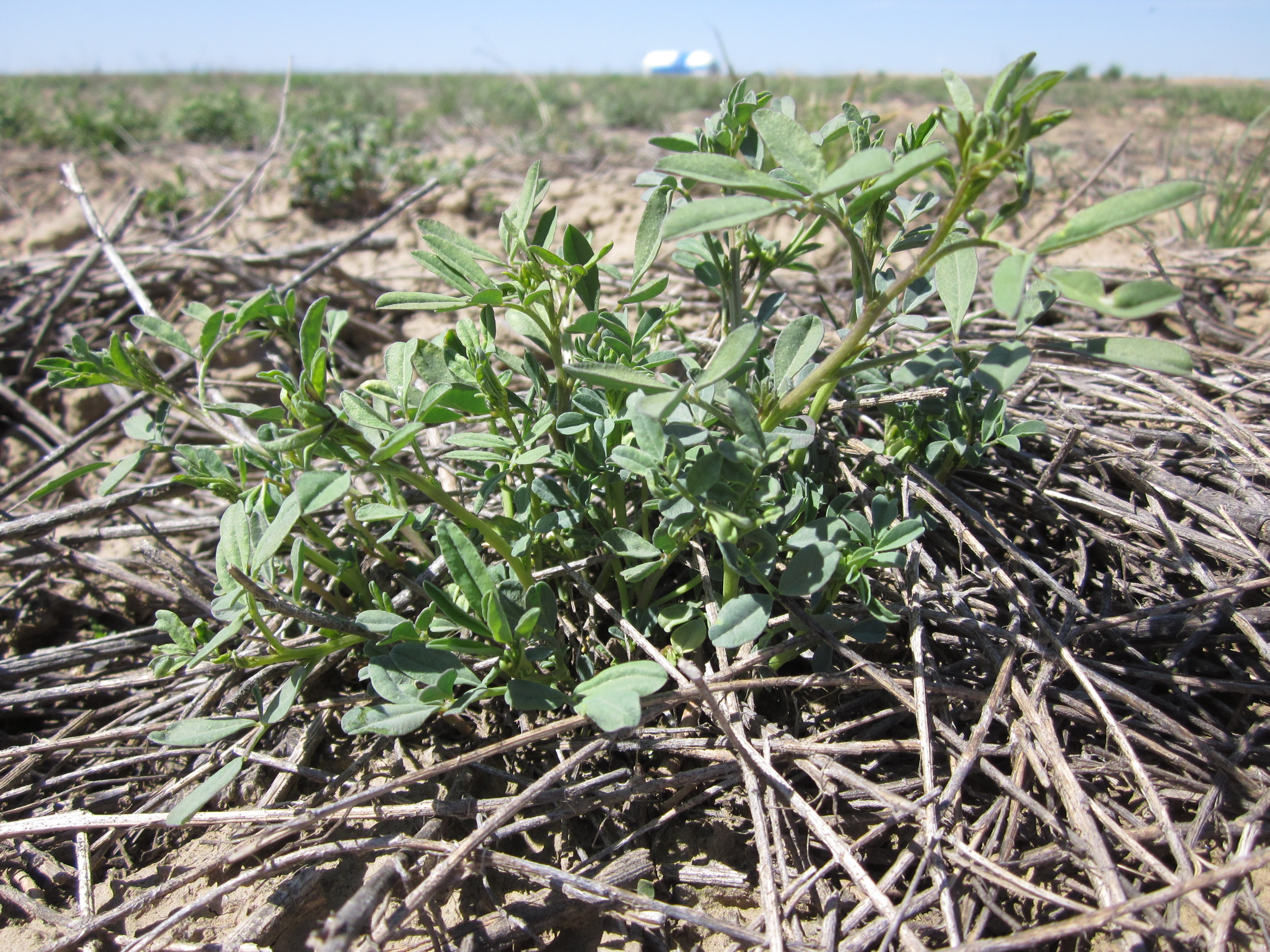Dalea ornata (Western prairie clover)
Also called Blue Mountain prairie clover. Native, non-toxic perennial legume with light pink to purple flowers, blooming May to July. Occurs on soft clay and sandy soils of sagebrush steppe communities; up to 8,000 ft. elevation. Taprooted. Highly palatable to herbivores and many types of wildlife. Intolerant of overgrazing. Primarily insect pollinated, attracts both native and managed bees. Use for habitat restoration, beautification and roadsides. Similar to Searles’ prairie clover (D. searlsiae). Varieties listed below.
DISTRIBUTION / ADAPTATION
INFORMATION & ATTRIBUTES
Family: Fabaceae
Duration: Perennial
Growth Habit: Forb/herb
Native Status: Native
Growth Form: Multiple stem
Mature Height: 12-24 in.
Bloom Color: Pink/purple
Bloom Period: May-July
Annual Precipitation: in.
Drought Tolerance:
Shade Tolerance:
Elevation: 3,000-8,000
Fire Resistance:
Fire Tolerance:
Nitrogen fixation: Yes
SOIL ADAPTATION
Coarse Texture: Yes
Medium Texture: Yes
Fine Texture: Yes
Salinity Tolerance:
CaCO3 Tolerance:
pH Range:
SEEDING NOTES
Seeds per Pound:
Seeding Rate: 4-5 PLS lbs/acre
Season: Spring/Fall
Days to Germination:
VARIETIES & LOCAL ACCESSIONS
Aridlands - Source Identified selection from Wheeler County, OR averaging 11-14 in. annual precipitation.
Majestic - Represents the genetic diversity from the western Columbia Plateau and western Blue Mountain ecoregions. (Released 2011)
Spectrum - Represents the genetic diversity from the central and eastern Columbia Plateau, central and eastern Blue Mountains, Northern Basin and Range, and Snake River Plain ecoregions. (Released 2011)




